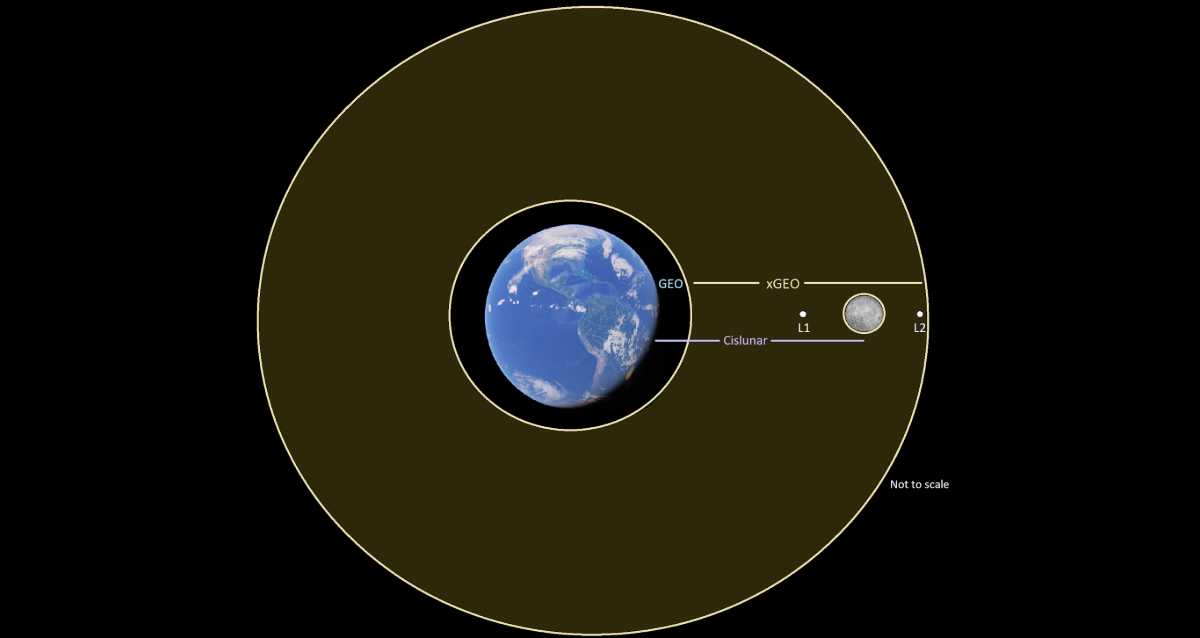Mountain View, CA (March 21 2024) — As the U.S. prepares to return to the moon, the need for responsive access to this region is absolutely necessary, or in Latin, sine qua non.
There is a vast region of space that begins at Geosynchronous Earth Orbit (GEO) and extends out to the Earth-Moon Lagrange point on the far side of the Moon (L2). This region includes most of cislunar space and is commonly referred to as xGEO (beyond GEO). It will experience a rapid influx of activity from national, international, and commercial entities in the coming years, particularly the cislunar region of xGEO. The Department of Defense (DoD) must be poised to foster safe and secure commercial and civil growth in this region.
Defense Innovation Unit (DIU) launched “Sinequone'' to prototype the use of commercial launch and orbital transfer systems to deliver capabilities and assets to one or more orbits in xGEO and/or cislunar space. In response to the Sinequone solicitation, DIU received 112 solution briefs from 94 companies.
“DIU has several programs to improve access to and responsiveness in space for the DoD. Sinequone builds upon these efforts by extending to this new domain of interest,” said Nathan Gapp, DIU Program Manager.
There are substantial technical challenges that must be solved to provide this same capability all the way out to the Moon. Those challenges include vast distances (the Moon is nearly ten times farther than GEO and over 200 times further than LEO) and the effects of gravity from the Moon and the Earth on a satellite greatly complicates orbital operations.
Sinequone will demonstrate the commercial launch and delivery of payloads or space vehicles (SVs) to a predetermined orbit, or orbits in xGEO. This prototype effort will enable the government to evaluate the technical feasibility and operational effectiveness of the company’s responsive launch and delivery capabilities. The demonstration will focus on the successful application of the combined launch vehicle and orbit transfer vehicle technology and methodologies to meet the government's goal of delivering the initial SVs to orbit within 18 months of approval to proceed .
DIU selected Firefly Aerospace under the Sinequone effort to deliver three to six SVs across one or more launches to orbit(s) in xGEO/cislunar space, with the goal of reducing the time to deliver for each subsequent mission.
